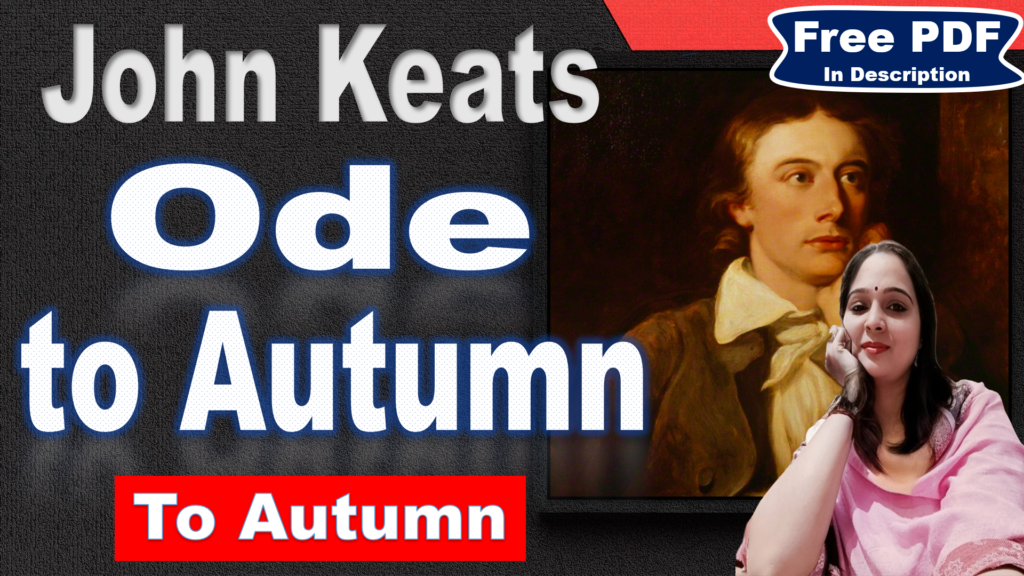
Essay Type Questions
Write the critical appreciation of the poem “Ode to Autumn”.
Introduction John Keats, one of the most prominent figures of the Romantic movement, is renowned for his profound poetry that captures the essence of nature, beauty, and the human experience. His poetic masterpiece, “To Autumn,” showcases his exceptional ability to evoke emotions and imagery through his exquisite use of language and vivid descriptions.
Historical Context “To Autumn” is an ode written by John Keats in 1819. It is the last of his six odes, which are some of the most studied and celebrated poems in the English language. The poem was written shortly before Keats’s death in Rome in 1821, where the 25-year-old succumbed to tuberculosis.
Themes and Motifs The poem explores several themes and motifs, including nature and beauty, transience and mortality. It praises autumn, describing its abundance, harvest, and transition into winter. The poem’s themes of transience and the cycle of life are particularly poignant, as Keats reflects on the fleeting nature of beauty and life itself.
Literary Analysis The poem is written in iambic pentameter. The first stanza has a rhyme scheme of ABABCDEDCCE while stanzas 2 and 3 have a rhyme scheme of ABABCDECDDE. The poem encourages the reader to appreciate the beauty and impermanence of life. Keats uses personification to depict autumn as a figure actively involved in various natural processes. The poem uses intense, sensuous imagery to elevate the fleeting beauty of the moment.
Critical Reception “To Autumn” has been highly praised by critics for its vivid imagery, compelling themes, and beautiful language. Many critics agree in ranking “To Autumn” first among Keats’ Odes. Its three eleven-line stanzas ostensibly do nothing more than a season; no philosophical reflections intrude.
Conclusion “To Autumn” is a powerful tribute to the richness and vibrancy of the season. Keats’ evocative portrayal of autumn’s bounty invites readers to appreciate the beauty and significance of the season. With its descriptive language and compelling imagery, “To Autumn” continues to inspire critical appreciation and admiration for Keats’s poetic genius.






I want pdf of this lecture